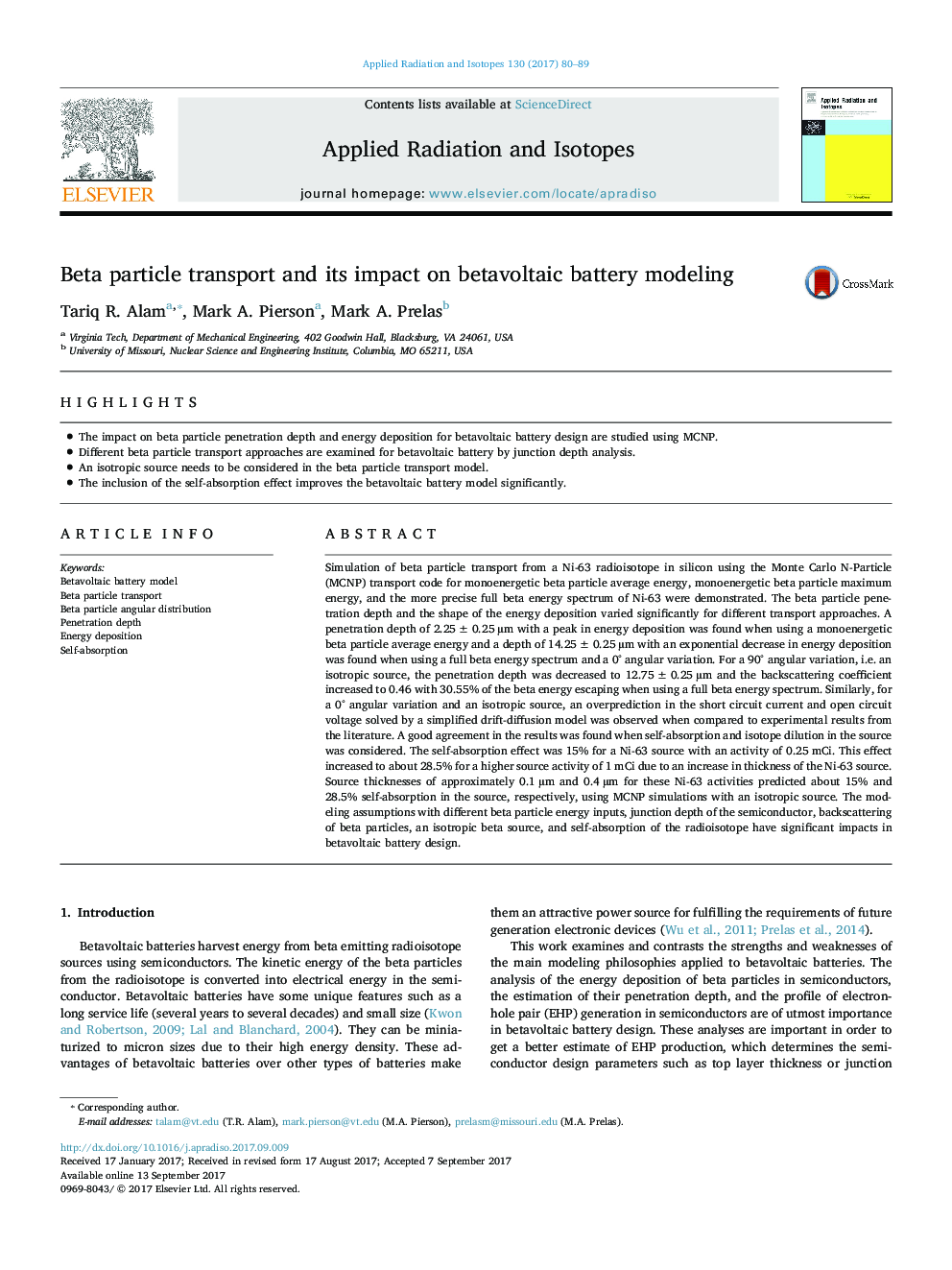| Article ID | Journal | Published Year | Pages | File Type |
|---|---|---|---|---|
| 5497584 | Applied Radiation and Isotopes | 2017 | 10 Pages |
Abstract
Simulation of beta particle transport from a Ni-63 radioisotope in silicon using the Monte Carlo N-Particle (MCNP) transport code for monoenergetic beta particle average energy, monoenergetic beta particle maximum energy, and the more precise full beta energy spectrum of Ni-63 were demonstrated. The beta particle penetration depth and the shape of the energy deposition varied significantly for different transport approaches. A penetration depth of 2.25±0.25 µm with a peak in energy deposition was found when using a monoenergetic beta particle average energy and a depth of 14.25±0.25 µm with an exponential decrease in energy deposition was found when using a full beta energy spectrum and a 0° angular variation. For a 90° angular variation, i.e. an isotropic source, the penetration depth was decreased to 12.75±0.25 µm and the backscattering coefficient increased to 0.46 with 30.55% of the beta energy escaping when using a full beta energy spectrum. Similarly, for a 0° angular variation and an isotropic source, an overprediction in the short circuit current and open circuit voltage solved by a simplified drift-diffusion model was observed when compared to experimental results from the literature. A good agreement in the results was found when self-absorption and isotope dilution in the source was considered. The self-absorption effect was 15% for a Ni-63 source with an activity of 0.25 mCi. This effect increased to about 28.5% for a higher source activity of 1 mCi due to an increase in thickness of the Ni-63 source. Source thicknesses of approximately 0.1 µm and 0.4 µm for these Ni-63 activities predicted about 15% and 28.5% self-absorption in the source, respectively, using MCNP simulations with an isotropic source. The modeling assumptions with different beta particle energy inputs, junction depth of the semiconductor, backscattering of beta particles, an isotropic beta source, and self-absorption of the radioisotope have significant impacts in betavoltaic battery design.
Related Topics
Physical Sciences and Engineering
Physics and Astronomy
Radiation
Authors
Tariq R. Alam, Mark A. Pierson, Mark A. Prelas,
